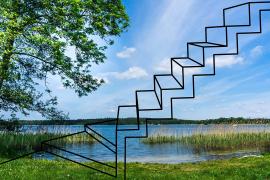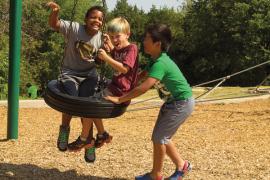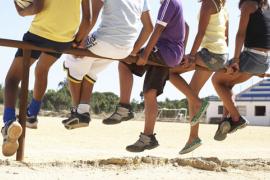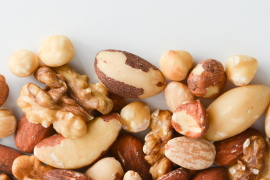As tribal ambassador for the Penobscot Nation and president of the Board of Directors for the Wabanaki Alliance, Maulian Dana Bryant represents the Penobscot Nation to local, state, and federal governments and helps shape and advocate for policy. She also participates in educational outreach and relationship building with many organizations and individuals throughout her ancestral homeland, now called Maine. She has a BA in Political Science from the University of Maine Orono and an Honorary Doctorate in Law from Colby College. Maulian believes in “leading with love and advancing equity by finding shared humanity.”
Please tell us a little bit about yourself and your journey to becoming the tribal ambassador for the Penobscot Nation.
I am a 39-year-old Penobscot woman from the Penobscot Nation, where I still live, work, and raise my three daughters. I was able to be around tribal leaders from a young age and got very interested in how to achieve policy progress for my people, but also social justice with things like Indian mascots and educating to counter unfair stereotypes and harmful practices.
I had my first two children fairly young, being pregnant with my first daughter when I graduated from the University of Maine in 2006 with a BA in Political Science. I always had an interest in getting into policy and advocacy work, but by the age of 24 I had two babies to care for, so I took a job doing human resources. While working there I kept speaking out on our issues, and I was always writing op-eds, doing radio interviews, and being involved wherever I could. I ran for Tribal Council twice and narrowly lost each time. I took an election off and came back to run in 2016 and was elected. The tribe had removed the legislative representative due to a tense relationship with the state government and developed the role of ambassador to take a more sovereign approach to diplomacy and policymaking. I applied for the role and was appointed by Chief Francis in 2017 and have been reappointed twice since. It is such a huge honor to do this work and to get to bring my activism and political science education into this position working for my people. It truly is a dream come true.
You gave a very powerful TEDx talk in 2019 where, among other things, you described your feelings about watching Peter Pan as a child as well as seeing your people used as mascots. I want everyone to really understand the inherent harm here, so can you explain a little about those experiences and feelings?
When I was young I took a lot of pride and comfort in my heritage as a Penobscot person. My parents are both Penobscot, and my dad taught me a lot of the songs, stories, dances, and ceremonial practices when I was very little. My grandmothers were both very involved in our family and worked for the tribe, so I had these parts of my identity really woven into who I was instead of being a separate thing I learned or practiced at certain times — it was/is me. I vividly remember seeing Walt Disney’s Peter Pan and understanding that the scene with the “Indians” was about me. But it certainly didn’t feel like anything I knew or was taught. That was a tough thing for a six-year-old to reconcile, and it made me feel confused and sad about how these scenes and pictures imprinted on me. Many of the same tropes and stereotypes — the broken English, big red nose, angry faces, sexy Indian maiden seducing Peter Pan, and being a mythical/lost/not-real people — are themes and issues I fought against for the next decades of my life in various ways. In the TEDx talk I touched on how I have always had an anxiety disorder and can remember both the stress of that as a young person as well as the relief and comfort my culture gave me. When I have confronted these things throughout my life and career, those two feelings are still very much present. Watching Peter Pan was the first instance I can think of where I recognized those feelings.
You helped to pass a law in Maine to ban schools’ use of Native American mascots. How did you tackle that, and what did you learn from the experience?
I started working on advocating against the use of Indian mascots as a teenager. I saw two basketball teams in Maine using Indian mascots in a game, and the stereotypical tropes and imagery were all throughout the game. There were fake feathers and war paint. There was dancing around and banging drums while doing the “war whoop” from movies. I got activated in an angry way but was lucky to have strong mentors around me to help me funnel my energy toward educating and trying to talk to different communities about the harm these mascots perpetuated. Once I learned more about other tribal citizens’ experiences, data and research by organizations like the American Psychological Association, and ways to work with institutions to make these changes, my anger quickly turned into a more balanced and knowledge-based approach to this activism work.
When I was appointed Ambassador I worked with a lawmaker to write a bill to ban these mascots in Maine schools. While the bill was going through the process, we worked with the last school in Maine that had one of these mascots, Skowhegan. They voted to change their Indian mascot shortly before the bill was signed into law. I learned so much from this whole journey.
Skowhegan was a very long fight. They had previously voted to keep the mascot after many meetings and sharing with their school board and community. I received threats and racist taunts and felt unsafe bringing my children to the town. When you are feeling threatened, I think it’s easy to fall into a mindset of you versus them, and it becomes about winning. That doesn’t work — and I learned that when they voted no. No matter how righteous or factual you feel your cause is, if you aren’t considering the full humanity and journey of those you are trying to work with, you will not open hearts and minds.
When we got the vote passed in 2019 it was because we took a better and less-adversarial approach. The law passing was one of the most precious moments in my life and career. My older daughters came with me to the bill signing. Knowing that they can go to high school in their ancestral homeland without seeing these mascots — it was an amazing full-circle moment.
While things are changing, Indigenous tropes and imagery are still prevalent in camps. What do you want camps using Indigenous symbols and language to know?
When you are using stereotypes of any group of people — even if you feel like it is done in a nice and honorable way — you are still stealing from them and using parts of their identity in a way that doesn’t align with truth. I don’t think people are inherently racists or bigots; they really want to honor Indigenous chiefs/warriors/culture/history. So knowing that there is a quest for connection is a good start, because then we can talk about how to actually honor each other and learn about one another. When our people are reduced to these symbols and caricatures, it takes away from our full experience as modern and evolving human beings. A lot of folks who only know about stereotypes and not the real Indigenous people have very false assertions about who we are — and that can cause harm and confusion. It also diminishes the self-esteem and confidence of Indigenous youth who want to embrace and celebrate their culture. Seeing it misappropriated is damaging.
What do you mean when you say you “lead with love and advance equity by finding shared humanity” in the course of your advocating for policy change and educational outreach regarding cultural appropriation?
This points to my lessons learned about how to make progress on these issues. It can’t be about winning and losing or putting others down because they are doing harmful things. It has to be about finding the love in the cause — because it isn’t about winning; it is about protecting the sacred love you have for both the people you are trying to help and the people whose minds you are trying to open and change.
What are some areas where you think summer camp leaders and Indigenous people can find common ground?
I think a great first step is camps figuring out what tribal nations are the ancestral and current inhabitants of the land they occupy. Land acknowledgments have become standard practice in many areas over the last few years, and I always like them to be a bridge to a deeper collaboration with tribes.
Camps seem to take on these images and language because of a connection to the outdoors and wilderness. I think a powerful way to be authentic in this learning would be to bring in Indigenous experts and artists to educate and share with the staff and campers. I think naming things in real Indigenous language and learning about the names and why they are significant is a great thing for all the campers as well.
What advice would you give to camps that would like to change their name or remove Indigenous language from their cabin names, etc., but have a prominent financial donor or board member who is opposed to the action?
I think there is room for having language in camps. We see a lot of place names that are from tribal languages, and they are describing the landscape or plants and animals of that area. I think involving Indigenous experts and having a real consultation is a good first step in clearing up a lot of these instances of using names or languages that aren’t authentic or are inappropriate.
You have said that “social justice is a marathon, not a sprint.” So where do you (and where should we) go from here?
I feel good about the work we have done and progress we have made, and that work lays the foundation for going forward toward increased equity and inclusivity across racial groups and disparities. These matters of social justice sometimes are coded as being symbolic or surface-level issues, but they do bleed into policy and day-to-day life. Because if you don’t see a group of people as people, you won’t consider them as much as you should when making laws that govern their existence and communities. If you are familiar with stereotypes and not the real people, you will not be as effective at protecting their rights and legislating their issues. It is truly all connected. My work lately has been about tribal sovereignty and legal matters, but the social justice work is a spoke on the wheel of progress and helps us advance all our efforts.
On a large scale, I think all of us are moving toward a place of increased awareness and understanding about our shared and individual realities and histories and how that impacts and shapes our places in our shared world. It has to be less about blame and shame and more about how we use that knowledge and awareness to improve the future for all of us.
Interview conducted by Marcia Ellett, MPW, editor in chief of Camping Magazine.
Indigenous Appropriation Assessment Tool
This assessment tool — developed by Maine Summer Camps (MSC) — is intended to help camps examine their ethos with an openness to experiencing the camp’s symbols and practices from other perspectives.




